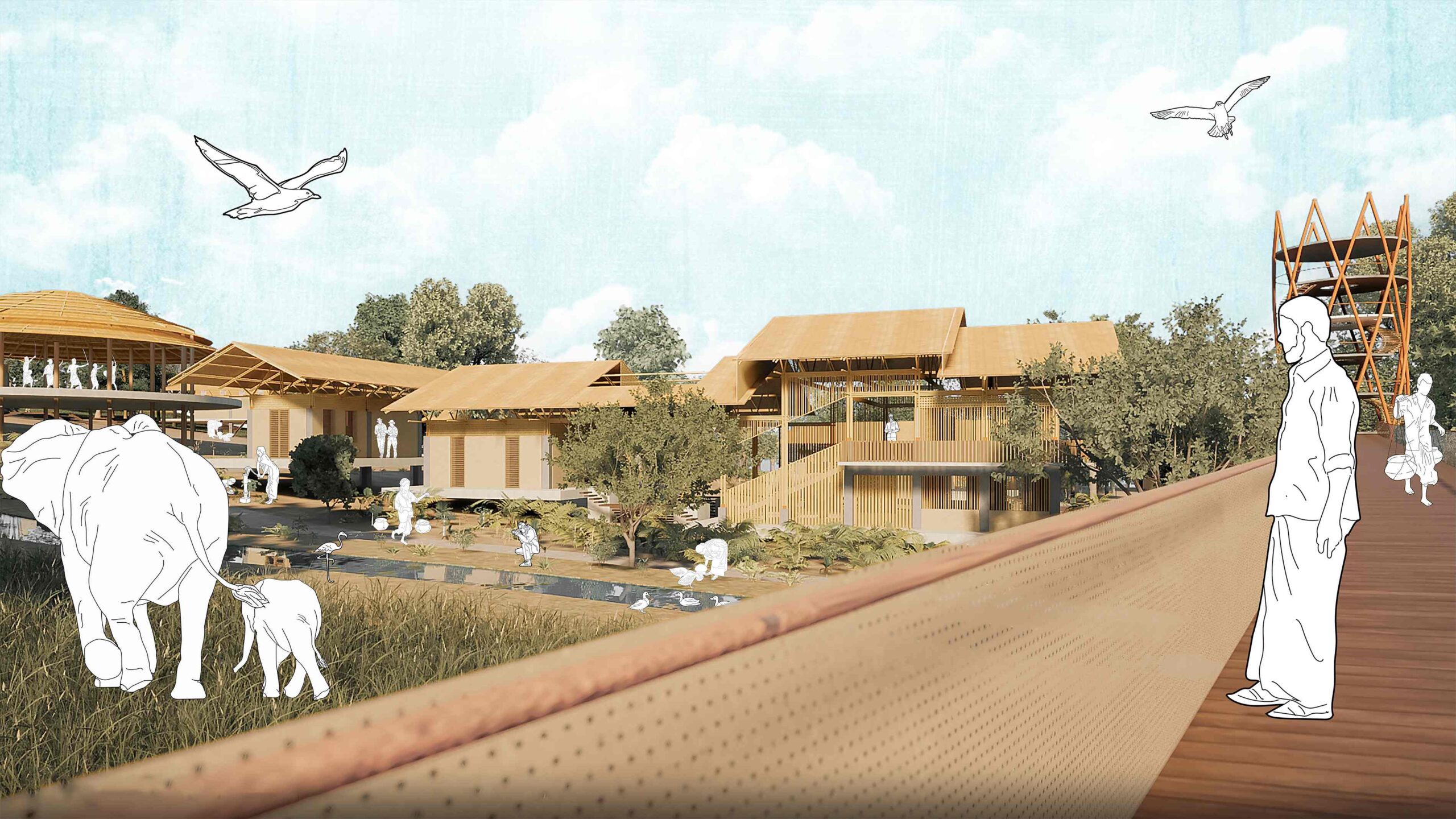

University : Bangladesh University of Engineering and Technology (BUET)
Tutor(s) : Dr. Md Ashikur Rahman Joarder, Patrick D’ Rozario
Project Description
The Asian elephant, an endangered species critical to ecosystem sustainability, has seen its population in Bangladesh decline from 3,274 to 228 over the past century as a result of human-wildlife conflict and habitat loss. Despite their ecological and cultural magnitude, such majestic creatures face a depressing future as their habitats become more divided and restricted by civilization. The intention of this thesis is to better understand human-elephant interactions and generate a sustainable master plan for rehabilitating ruined forests so as to support coexistence. It also provides guidelines for Northern Bangladesh communities to mitigate elephant conflicts using natural initiatives and adaptive interventions. The primary cause of human-elephant conflict in Northern Bangladesh is habitat fragmentation due to urbanization, agriculture, and infrastructure development, which disrupts elephant migration routes and forces them into human settlements.
Sustainable land-use planning, which includes habitat restoration, wildlife corridors, and community engagement, is necessary to address this. A synanthropic corridor approach integrates human and wildlife needs, creating resilient landscapes that support both ecological connectivity and coexistence. To address human-elephant conflicts in Northern Bangladesh, strategies include maintaining undisturbed elephant migration corridors, creating buffer zones between communities and elephant habitats, and rethinking community growth to restore forests. Additionally, community-based monitoring, rapid response systems, and infrastructure improvements, along with incentives like compensation for crop losses and support for alternative livelihoods, can promote coexistence and reduce conflicts.
The Garo community in Sherpur, Bangladesh, faces significant challenges due to frequent human-elephant conflicts, including crop raiding, property damage, and occasional human casualties. The Balijuri range, home to 45 families with a deep historical connection to elephants, integrates their unique architectural traits into a design philosophy that aims to harmonize their living conditions with the surrounding environment, fostering a sustainable and cohesive coexistence with elephants. The masterplan places priority on preserving the elephant migration corridor, creating grazing areas, and protecting cultivation lands with buffer zones. It reimagines human settlements to consolidate communities and expand forests, fostering sustainable coexistence through community conservation and strategically located public zones near the corridor.
In human-conflicted regions, conflict arises between two marginalized groups: one that lacks resources and habitat, and the other that lacks development and resources. According to both sides’ viewpoints, the human being is the key indicator for such a debate, not the elephant. The long-lasting perception of the cohabiting surroundings from the previous century, deeply ingrained in the collective consciousness of the local population, forms the roots of this infrastructure. The architectural approach addresses this by drawing on historical cohabitation and cultural memory, ensuring that the design aligns with local ethnic identity and fosters a harmonious, synanthropic environment.
Community and public zones are core elements of the architectural design, meeting the community’s social and economic needs. Community amenities such as community halls, health care centers, and crop storage facilities not only serve important social functions, but they also protect the annual harvest from potential human-elephant conflicts. Public spaces such as experience centers allow tourists and wildlife enthusiasts to become acquainted with the region’s rich elephant heritage and ancient ethnic backgrounds, boosting their awareness of local cultures. Furthermore, observation towers allow visitors to appreciate the unique landscape of the coexisting ecosystem while also helping to monitor elephant migration routes.
In conclusion, Carl Gustav Jung, a Swiss psychiatrist, says, “Conflict exists strictly as an opportunity to raise our consciousness.”
Established in 2012, Tamayouz Excellence Award is an unaffiliated, independent initiative that aims to advance the profession of architecture academically and professionally. Tamayouz is dedicated to supporting aspirational and transformative projects that tackle local and global challenges and that are informed by a holistic understanding of context.